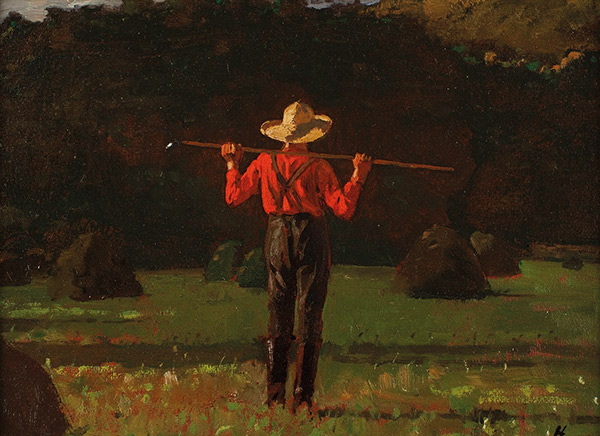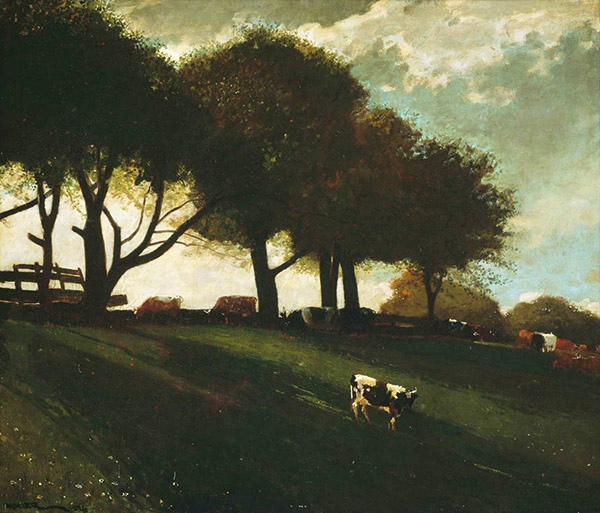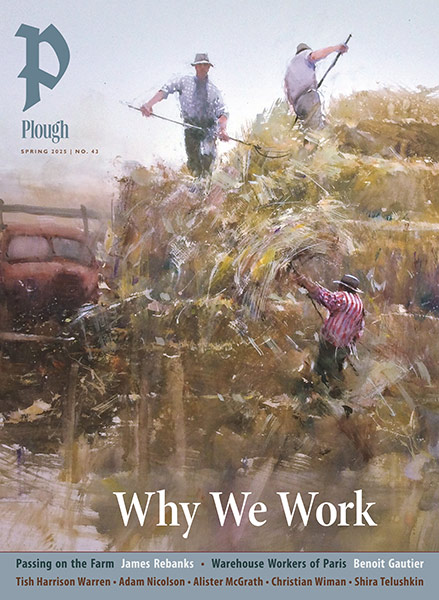Subtotal: $
Checkout-

Send Us Your Surplus
-

Masters of Our Tools
-

ChatGPT Goes to Church
-

Poem: “Blackberry Hush in Memory Lane”
-

Poem: “A Lindisfarne Cross”
-

Poem “Fingered Forgiveness”
-

God’s Grandeur: A Poetry Comic
-

Birding Can Change You
-

Disability in The Heaven & Earth Grocery Store
-

In Praise of Excess
-

A Church in Ukraine Spreads Hope in Wartime
-

Toward a Gift Economy
-

Readers Respond
-

Loving the University
-

Locals Know Best
-

A Word of Appreciation
-

Gerhard Lohfink: Champion of Community
-

When a Bruderhof Is Born
-

Peter Waldo, the First Protestant?
-

Humans Are Magnificent
-

Who Needs a Car?
-

Covering the Cover: The Good of Tech
-

Jacques Ellul, Prophet of the Tech Age
-

It’s Getting Harder to Die
-

In Defense of Human Doctors
-

The Artificial Pancreas
-

From Scrolls to Scrolling in Synagogue
-

Computers Can’t Do Math
-

The Tech of Prison Parenting
-

Will There Be an AI Apocalypse?
-

Taming Tech in Community
-

Tech Cities of the Bible

Give Me a Place
An East Tennessee farmer praises a simple piece of technology.
By Brian D. Miller
June 29, 2024
Available languages: español
Next Article:
Explore Other Articles:
I can’t say with any certainty that wielding a rock bar has contributed to my moral improvement or made me a better citizen – I’ll leave that for others to determine (hopefully out of my earshot) – though I will say that a quarter century of living this farming life has brought so many benefits, among them an old way of seeing.
Christmas gifts on our fifty-acre East Tennessee hill farm follow a predictable pattern. One year it’s a bundle of work gloves, the next, a maul for splitting wood. This past Christmas it was a lightweight metal rod with which to stabilize the PTO-driven auger when drilling postholes. It replaced the old rod, twisted serpentine from heavy use – curious but next to useless. The presents I receive typically offer up an augury of future farm activities.
I still recall my first Christmas on the farm in 1999. That was the year I received the rock bar as a gift from my partner, Cindy. The rock bar is the tool that Archimedes may well have had in mind when he postulated, “Give me a place to stand, and I shall move the earth with it.” It’s a twenty-pound, six-foot-long iron bar with a round flat head on one end and a wedge on the other, the perfect combination of form and function. If you are looking for a quick means to separate the men from the boys, put a rock bar in a fellow’s hands, then step back and observe. Your average muscle-bound gym rat will last about thirty minutes with the rock bar (and indeed most farm work); that wiry farm boy can use it all day. Turns out the farm kid is the “real” man of the two.

Winslow Homer, Farmer with a Pitchfork, oil on board, ca. 1874. Image from WikiArt.
Having dug hundreds of postholes, I can confirm with some authority that the rock bar lives up to its name. When you have dug through two feet of clay only to hit solid, seemingly immutable rock, the rock bar is the only tool to part the sea of stone. Raise it high in the air, wedge side poised, and bring it down with full force. Repeatedly. Breaking big rocks into smaller rocks with the bar gives you a feel for what it must be like for the prisoner in a Russian gulag: it’s hard, make that very hard, physical work, yet when it’s used voluntarily it’s intensely satisfying.
Once your hole is dug and your post is in place, flip the bar over to the round edge. As dirt is added to fill the hole, use a rhythmic pounding action with the rock bar to compact the earth. Tamping requires short brutal strokes around all sides of the post. No substitute tool or action is as effective in seating an eight-foot wooden anchor.
When it’s not pulverizing rocks into shards, the rock bar moonlights as a lever. Is there a stock trailer that needs to be shifted, a boulder that needs rolling uphill or downhill? In the right hands, this tool will do the job and with minimal effort on your part. Seldom does a day go by without my bringing out the rock bar.
I learned about the rock bar long before I embarked on farming. My first exposure to its wonders came in the early 1970s, working alongside my brother and cousin on my uncle’s cattle ranch, in the Big Thicket across the Sabine River in Texas. His family lived in Beaumont, a gritty industrial city on the Gulf Coast an hour from my Louisiana home. Most weekends my uncle and cousin could be found either hunting squirrels with their Catahoulas or tending their cattle. Once, when pressed by my cousin’s mother why my uncle and cousin were always heading to the woods or the ranch, my uncle told my aunt, “Cille, you can’t raise a boy on a hundred-foot-square city lot.” For a few summers in a row my uncle “educated” his boy, along with me and my brother, in the art of digging holes, setting posts, and firming them with the rock bar in the East Texas dirt. Lift and pound, lift and pound. So, in 1999, when I unwrapped an unusually heavy and long Christmas package, I knew, and embraced, what lay in store.

Winslow Homer, Twilight at Leeds, New York, oil on canvas, 1876. Image from WikiArt.
A good tool is more than just the sum of its parts (or, in the case of the simple iron rock bar, the lack thereof), and it is only with repeated application that the tool’s merits are fully revealed. If a tool is chosen well, the physical act of using it often has the unexpected benefit of bonding you to a place. Much like the carpenter who can point with pride to the house he built, having sweated and set hundreds of wood posts with a rock bar, then stretched and stapled a fence to each and every post, you find that you have built a connection with your land, your place – a firmed-up appreciation, you might say, one that is tangible to the eye in the results stitched across a pasture.
The work done on this farm of mine has shaped me physically, strengthened me, sometimes hurt me (as my aching shoulders remind me most mornings). I expected those particular consequences as I learned to work the land. Beyond the physical, I also had an expectation, even a hunger, that this farming life would reshape me in other ways. Although I couldn’t have predicted the specifics, I certainly carried the hope that it would lead me away from the rootless and easy path I was traveling and toward an older way filled with purpose, competency, values, and even virtue.
Farm work provides daily if not hourly opportunities for deep introspection, chances to glimpse links within links, the cycles unending, like a skipped rock that sends ripples across the water. A hole is dug, a post is set, the earth is tamped, a fence is stretched, and gates are hung. A flock of sheep is released to graze, and lambs are born, weaned, reared, and butchered. On a late summer’s day, the ram is turned in among the ewes, and the cycle repeats anew. Grass is sown and hay is cut. A nephew visits, helping work the farm each summer, learning the hows and whys of the rock bar. You pass on the anecdote to him, then later to his mother (your sister), that you can’t raise a boy on a hundred-foot-square city lot. The cycle repeats. He develops muscles, not only the physical kind but also the mental ones that he did not know he possessed. The rock is skipped again, and the waves begin another journey across time and waters.
It is not just this tool – a straight iron bar wielded by a pair of hands doing simple work – that has the power to shape a farm, reshape an individual, and help make this place productive. It is that by working modestly and manually you can find the right lever to shift the circumstances of your life. Then maybe on some land of your own, in a workshop, or in your garden, things begin to move. If you are lucky, one day those changes will lead to where you should have been and who you were meant to be – where the blinkered blindness of this modern life falls from your eyes and you can see your way back into the world.
Already a subscriber? Sign in
Try 3 months of unlimited access. Start your FREE TRIAL today. Cancel anytime.












































Don Jones
I have lived and worked among East Tennessee farmers all my life. My character was shaped partially at least by being in "the country" with my grandparents. Simple does not mean easy.
Walter Prehn
Wonderful meditation on a priceless tool. Having worked as a college boy on the railroad back in the 1970s (not FOR the railroad but ON the railroad, I like to say -- and in Louisiana), I was taught to call it a "lining bar" or a "nipping bar." The sharper end was thrust into a wooden crosstie and the bar was used to "nip" the tie up enough to then shovel dirt and gravel underneath it. Such nipping and tucking could eventuate in such a solid, immovable situation with the crosstie that the track seemed mounted on a concrete foundation. The lining bar was also used to move pieces of steel track across the crossties, getting them into position on the fasteners, spiking rail and fastener, and thus making the rail secure. These bars were likewise used as the handles to the heavy jacks by which the rails were raised in order to remove crossties and replace them with new ones. But "rock bar" or "tamping bar" sure does describe what most of us use them for now. Thank you and thank God for rock bars.
Jeff
Great piece and I’ve had to use such a bar way too many times since moving to the mountains. Good to read you again, Brian Https://fromarockyhillside.com
Doug Wiebe
I was quite overwhelmed to read Brian Miller’s “Give Me a Place”. So many memories of growing up on the prairies of Saskatchewan. I would never have thought of reflecting on the rock bar. Where i come from it was called a “crow bar”. I’m not sure if it is “crow” or “cro” but it was exactly as Brian describes it. We had two of them, and they were used on a daily basis. A major difference was that rather than a young man using it, it was a pre-teen and then young-teen using it. Every summer, a few weeks were spent building and repairing fences, the main part of which was using the crow bar to makes holes for the fence posts. The prairie soil was hard as could be. Hiding just below the surface were rocks. I can still recall the pain of driving that bar into the soil, hoping to make a dint in the ground only to hit an immovable rock. You couldn’t dig elsewhere as the fence being in a straight line was of prime importance to my dad. Not only that, the posts had to be exactly the same distance between them. Dad would drop me off along with a fence posts, a sledge hammer, and a bucket of water. The water was to be aded to the hole shortly before putting in the post, the purpose being to soften the soil so the post could go in a little deeper. It was not fun. The hot dry sun beat down upon me. Mosquitoes surrounded me and took what blood they could. Once the posts were in and tamped with rocks and soil, it was time to roll out the barbed wire. I still have a scar on my leg from being attacked by the barbed wire when it resisted being unrolled. I relate to Miller’s comparison of it to being a prisoner in the Russian gulag, for it was surely how I felt. I only wanted to escape. It never occurred to me that I was making a connection to the land. My place? Not at all. I left it in 1969 heading for Hong Kong, and had no inclination to return. Now as I approach my 80th birthday I wish to return and walk again those rocky hills, and see one last time where my cremated remains will be deposited before too long, and perhaps to express gratitude for how it shaped me.